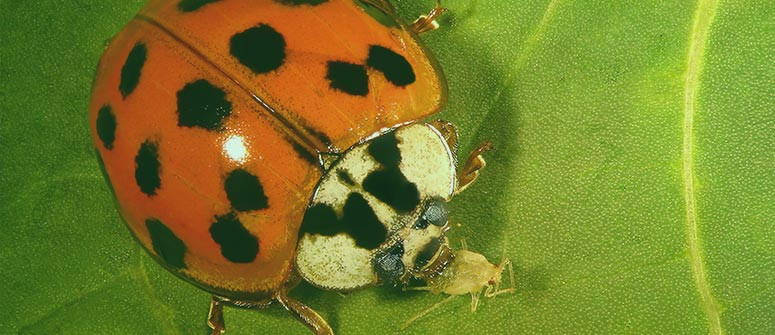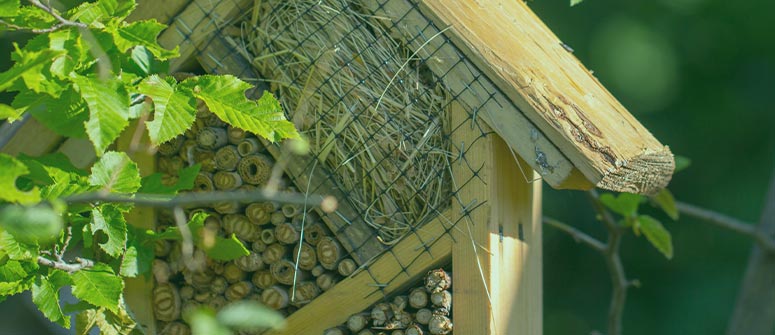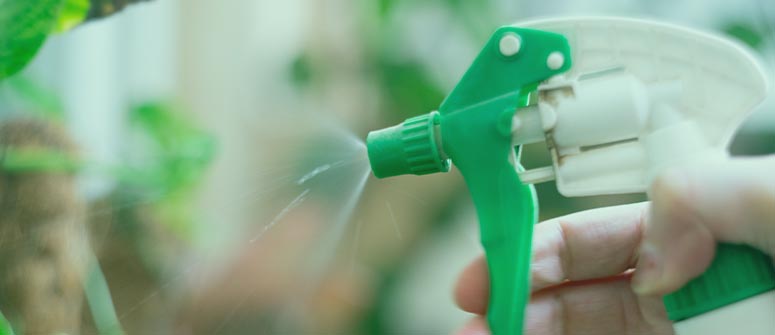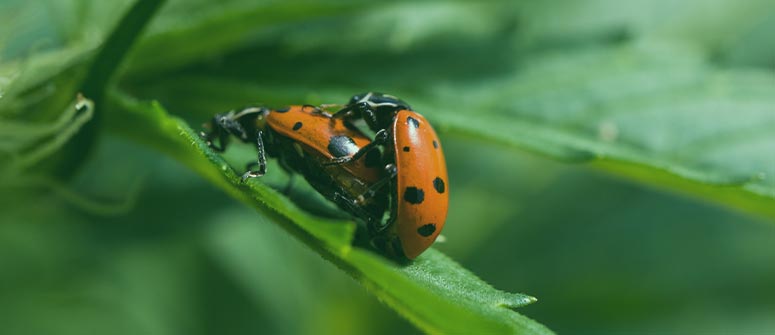How to use ladybugs to get rid of spider mites

Spider mites can cause a lot of damage to a cannabis plant. Left unchecked, they can even kill it. Fortunately, it's easy enough to stop them, with a little help from nature. Ladybugs are ferocious predators that love to feast on spider mites. Here's how to use them to your own advantage.
Contents:
Spider mites can be a real problem in a cannabis grow. From stunting growth to causing fatal damage, they are a pest you do not want to call your weed home. But if they do, what can you do about it?
Fortunately, nature has a solution! Ladybugs are avid predators that will clear up a spider mite infestation in no time. All you need to do is make them feel welcome and give them somewhere cool to hang out in the heat of the day.
Here’s all you need to know about spider mites, and how to fight them with ladybugs.
How do ladybugs stop spider mites?

Ladybugs are ferocious predators that can, in big enough numbers, terminate a spider mite infestation. They’ve got no special tactics; they’re just creatures with a big appetite and the ability to scent out and hunt down spider mites.
Once they find them, they eat them. A single ladybug can eat as many as nine spider mites in an hour, meaning that on a good, long day, they might be able to bag more than a hundred. It’s not hard to see how a handful of ladybugs could sort out your spider mite infestation in no time.
Whether you try to attract wild ladybugs or buy some from a garden centre, these beneficial insects are fantastic for pest control. Not only are they perfect when seeking to control spider mite populations, but they hunt a variety of other common cannabis garden pests too!
What are spider mites?
Spider mites are members of the Tetranychidae family, a type of arachnid. Closely related to spiders (as the name may suggest) and ticks, they’re members of one of the least liked families in the animal kingdom.
A mature spider mite measures around 1mm in length—so not much. But a whole colony of them can wreak havoc on a cannabis grow, even proving fatal. Usually, they are red and black, and just like their arachnid cousins, have eight legs. Moreover, they even weave webs throughout the plants they call home. This webbing helps to protect the colony from predators.
Spider mites begin life as small, almost transparent eggs laid on the underside of leaves. In time, these will darken, and eventually the larvae will hatch as the weather warms up.
How to spot spider mites on cannabis
There are several ways to spot spider mites on cannabis:
- Identify the creatures themselves: Though small, they are just about visible to the human eye. Nevertheless, proper identification will be difficult without a magnifying glass. They spend much of their time on the underside of leaves, though can be found anywhere on a plant. It’s rare to find spider mites alone, as they live in large colonies.
- Webbing: If there is a fine webbing throughout your cannabis plants, it’s highly possible this is the work of spider mites. Often, you’ll see them on or around this webbing.
- Eggs: They lay their eggs on the underside of leaves, in clusters. Combine these eggs with webbing, and you can be fairly confident of what you’ve found.
- Stippling on foliage: Spider mites feed on the chlorophyll in plants. This feeding leaves small brown dots all over the foliage, where they have penetrated the surface.
- Discolouration and stunted growth: In time, this feeding practice will lead to leaves discolouring and wilting, with the whole plant slowing its growth and perhaps even dying. If you notice any of these symptoms, you likely have a problem.
How to use ladybugs to protect cannabis

Fortunately, nature is here to save the day. A timely release of ladybugs should quickly put a stop to your infestation and return your plants to good health.
Release them at the right time
If you purchase them from a garden centre, timing the release will increase the chances of them doing their job. These small beetles like cool, moist environments. Therefore, releasing ladybugs in the early morning or evening is best. The heat of the day will drive them to cool, damp places, and they may go elsewhere when they reemerge. Releasing at the right time should ensure that some of them stay put, and begin feasting immediately.
Spray plants
Ensuring your cannabis plants have a layer of moisture on them will make them more hospitable to any ladybugs you’re trying to introduce. This moisture, plus a ready supply of spider mites, should create the perfect home for them, and hopefully they’ll stick around until they run out of food!
Build a ladybug house
If you release ladybugs onto your crop, they might stick around for a little bit, but soon they’ll be looking for somewhere to call home. Depending on your garden, this may be close at hand. But to ensure that they stick around to keep a permanent eye on your operation, you can build them a home they can’t refuse.
Ladybug house equipment
- Small vented box with a fitted tray (like a cloning container)
- New, clean sponge (free of any soap or detergent)
- Reverse osmosis water
- Raisins, craisins, or other dried fruit (no citrus)
Directions
- Remove the tray from your vented box.
- Dampen the sponge with your reverse osmosis water. Add it to the tray.
- Add a small handful of the dried fruit (about 15 pieces).
- Put your ladybugs in the box; make sure it’s well-vented.
- Carefully place the box in your garden, out of direct sunlight.
- Make sure to refill the food and water tray daily or as needed.
Other ways to remove spider mites

Ladybugs aren’t the only means by which you can solve a spider mite problem. Here are some other solutions.
Neem oil
If you want to use a pesticide, then neem oil is a good option. This is a fully organic solution that doesn’t cause lasting damage to the environment. But it will put an end to your spider mite problem. Best employed as a foliar spray, it’s very simple to administer. Target the underside of the leaves, where the specimens and their eggs are predominantly found, as well as the webs. After a few administrations of neem oil, you should be good!
Companion plants
There are certain plants that you can grow alongside your cannabis crop which will help to repel and deter spider mites. The best part is, you can eat them all too! These are:
- Dill
- Anise
- Caraway
- Potatoes
Other predatory insects
Though ladybugs are probably the best and most accessible option, there are other beneficial insects that will predate spider mites too. Two examples are:
- Typhlodromus pyri
- Neoseiulus californicus
Using ladybugs to protect cannabis: A natural solution

Ladybugs are one of the best ways to deal with a spider mite infestation. Not only do they clear up the problem in no time, but, if you can get them to stick around, they will stop it recurring too. In this way, they are much better than a pesticide, which, though it might do the trick once, can’t stop it from happening again.
The bottom line is, if you can get ladybugs into your cannabis garden, you’ll be grateful!


